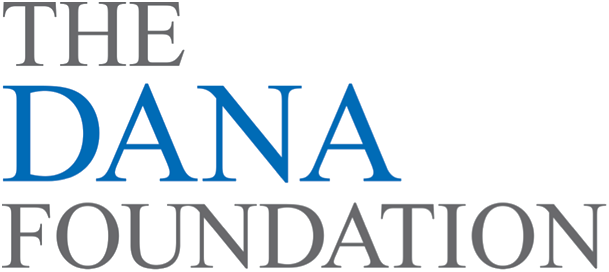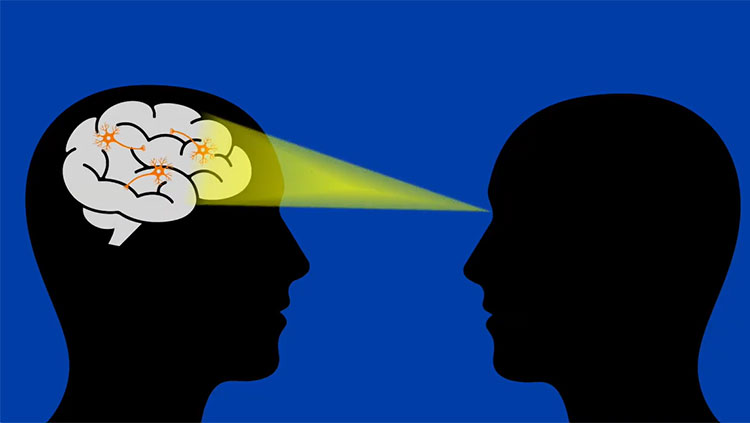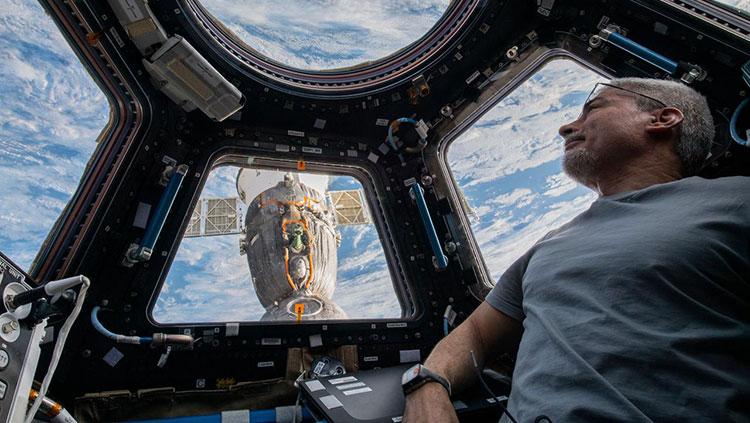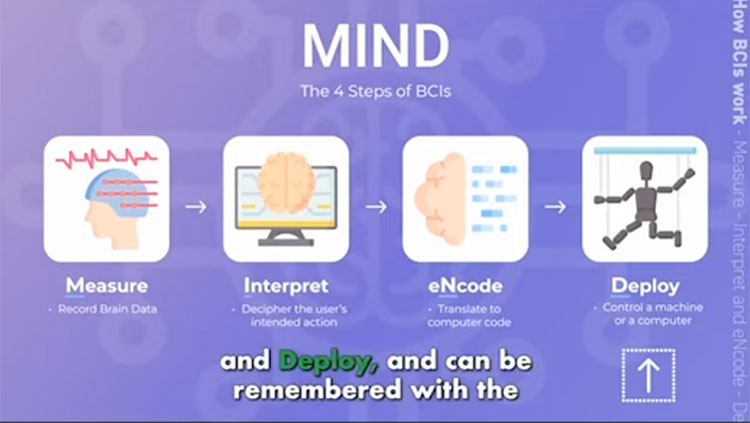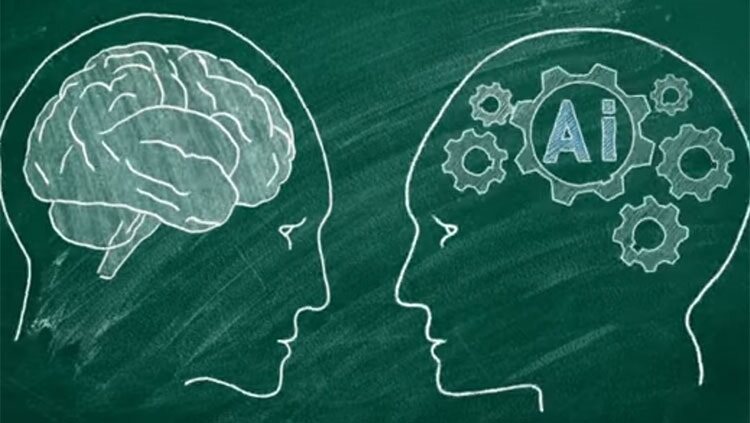This is Your Brain in Space
- Published5 May 2015
- Reviewed5 May 2015
- Source The Dana Foundation
When Yuri Gagarin, the first human in space, made his historic flight in 1961, Soviet scientists limited the mission to a single 108-minute orbit, and breathed a collective sigh of relief when it was over. Why? The usual concerns — plus fears that a prolonged flight in zero gravity could prove fatal.
Few remember Russia’s hapless second cosmonaut, Gherman Titov, who flew 17 laps around the earth and spent a fair amount of his time throwing up. Titov’s “space sickness” was severe enough to set back the Soviet spaceflight program by a year. “They didn’t know what they were dealing with,” Charles M. Oman, senior research engineer and director of the Man Vehicle Lab in the Department of Aeronautics and Astronautics at MIT, told Air & Space Magazine. “Humans are fundamentally flatlanders. Even though you’re not standing on the surface, the brain wants you to have one.”
During the extended Skylab missions in the ’70s, astronaut Owen Garriott has reported, even seasoned pros like moonwalker Alan Bean suffered through severe bouts of vomiting and diarrhea. “We slowed down and tried not to work so hard,” Garriott said. “Tried not to move around so much.”
The dream of a human mission to Mars, the International Space Station (ISS), and the ambitious if struggling plans of Virgin Galactic for commercial space flights have combined to put space travel back on the map. Still, major impediments loom. Space travel makes most people sick, and it may leave them cognitively impaired as well. Clinical psychologist Vaughan Bell of King's College in London writes that “there is now significant evidence that space travel has mind-altering effects.”
Space sickness is only the beginning. One of the continuing experiments on the International Space Station is called ALTEA, short for Anomalous Long Term Effects on Astronauts. Physicist Luca De Fino, one of the participating scientists, has focused on the effects of cosmic rays, especially the “Light Flash” phenomenon first reported by astronaut Buzz Aldrin in 1969. “He talked about strange flashes of multiple shapes and dimensions,” De Fino writes. Emulsion detector studies showed that the light flashes correlated with charged particles emitted by cosmic rays. “There are different shapes of flashes: stripes, multiple tracks, stars, explosions, etc.” De Fino speculates that the light shows “could be symptoms of a wider family of more complex neurophysiologic effects that are still hidden.”
Gabriel De la Torre, a clinical neuropsychologist in the Department of Psychology at the University of Cadiz who researches the cognitive aspects of space travel, worries that radiation may have “a big impact on human physiology and health if we do not figure out how to minimize its effect. Brain injury may be one of these effects, and long term exposure may evolve into serious consequences and deficits.”
Furthermore, as Oman at MIT points out, “there are other retinal issues that have emerged due to exposure to long duration spaceflight, perhaps due to increased intracranial pressure.” NASA scientists seem to think so, too, and are studying the link between vision impairment and intracranial pressure, or VIIP. They report that MRI scans after extended space flights show “various combinations of optic nerve sheath swelling, posterior globe flattening, optic disc protrusion,” all of which are presumed to be caused by increased cranial pressure “due possibly to fluid shifts in the head in the absence of gravity.”
Other primary problems involve disturbances of sleep, balance, blood pressure, and overall sensory integration. In a chapter written for a book on spatial processing, Oman writes that in the absence of “vestibular and haptic cues” about the directions of up and down, spacecraft crewmembers can suffer perceptual illusions about floors, walls, and ceilings, all of which can “make them more reliant upon landmark and route strategies for 3D navigation.” Shortly after landing, about half of all space travellers cannot stand upright for ten minutes without sitting or falling down. (See 2005 Dana Cerebrum article).
It’s no secret that cognitive performance and perceptual motor skills degrade under the influence of stress, and De la Torre calls space “an exceptionally stressful environment.” To the list of degraded psychomotor functions space voyagers may have to deal with, De la Torre adds “the speed and accuracy of aimed movements, internal timekeeping, attentional processes, sensing of limb position, and the central management of concurrent tasks.”
Some of the psychological effects of space flight are less straightforward. Anecdotal reports of anxiety, depression, and interpersonal conflict have dogged the Soviet space program, but details were sparse. In 1985, crewmembers on the Russian Salyut 7 suffered a series of technical problems, and, according to published accounts, the mission was terminated early due to a bout of serious depression suffered by station commander Vladimir Vasyutin.
“Have you ever thought of the effect it may have on astronauts to lose sight of planet Earth on a trip to Mars?” asks De le Torre. “We are now trying to get funded to study this in an experimental way. Also, what if astronauts develop in these long-term missions some form of subculture with their own codes of conduct? Delays in communications and the need for high autonomy may represent a good scenario for this to happen.”
Attempting to simulate a round trip to Mars, a group of researchers recently conducted the Mars500 mission—a 520-day experiment, staged in a pressurized facility in Moscow. In an address to the 63rd International Astronautical Congress, Diego A. Urbina and Romain Charles of the European Space Agency described their participation in the mission.
What personality traits proved most useful? According to Urbina and Charles, the list includes “tolerance, sympathy, correct balance in social connections (time in a group vs. time alone), and sense of humor.” They stressed the value of having a “psychological support” person, who was not a psychotherapist but simply provided help with communications and logistics.
What caused stress during the experiment? Delayed message responses, the lack of national food favorites, and restricted outlets for exercise topped the list. In addition, people in space naturally miss the earth—but there may be more to it. Biophilia, the notion that people have an innate preference for natural rather than artificial surroundings, seemed to be demonstrated by the popularity of the greenhouses on Mars500. Actor Bruce Dern’s job in the science fiction film Silent Running—taking care of the greenhouse—became one of the plum assignments on the Mars500 project, the authors report.
The best antidote to stress and depression proved to be reliable communications and interactions with persons of interest to the crewmember in question. Interaction with friends and family, write Urbina and Charles, “has a series of actual health benefits, such as blood pressure and cortisol level reduction that can be attributed to the release of the oxytocin hormone upon social positive interactions.”
“This improvement,” the authors note, “can last for hours if not days.”
These results matter: 70–80% of aviation accidents are caused by human error, researchers have concluded.
Most of us have heard about the powerful and positive experiences reported by many astronauts when they see the view of earth from space. Researchers have suggested that mission to Mars with human crews might want to include a telescope on board, so that the travelers can always look back and see their Earth.
- By Dirk Hanson
CONTENT PROVIDED BY
The Dana Foundation is a private philanthropic organization that supports brain research through grants and educates the public about the successes and potential of brain research.
Also In Tech & the Brain
Trending
Popular articles on BrainFacts.org


